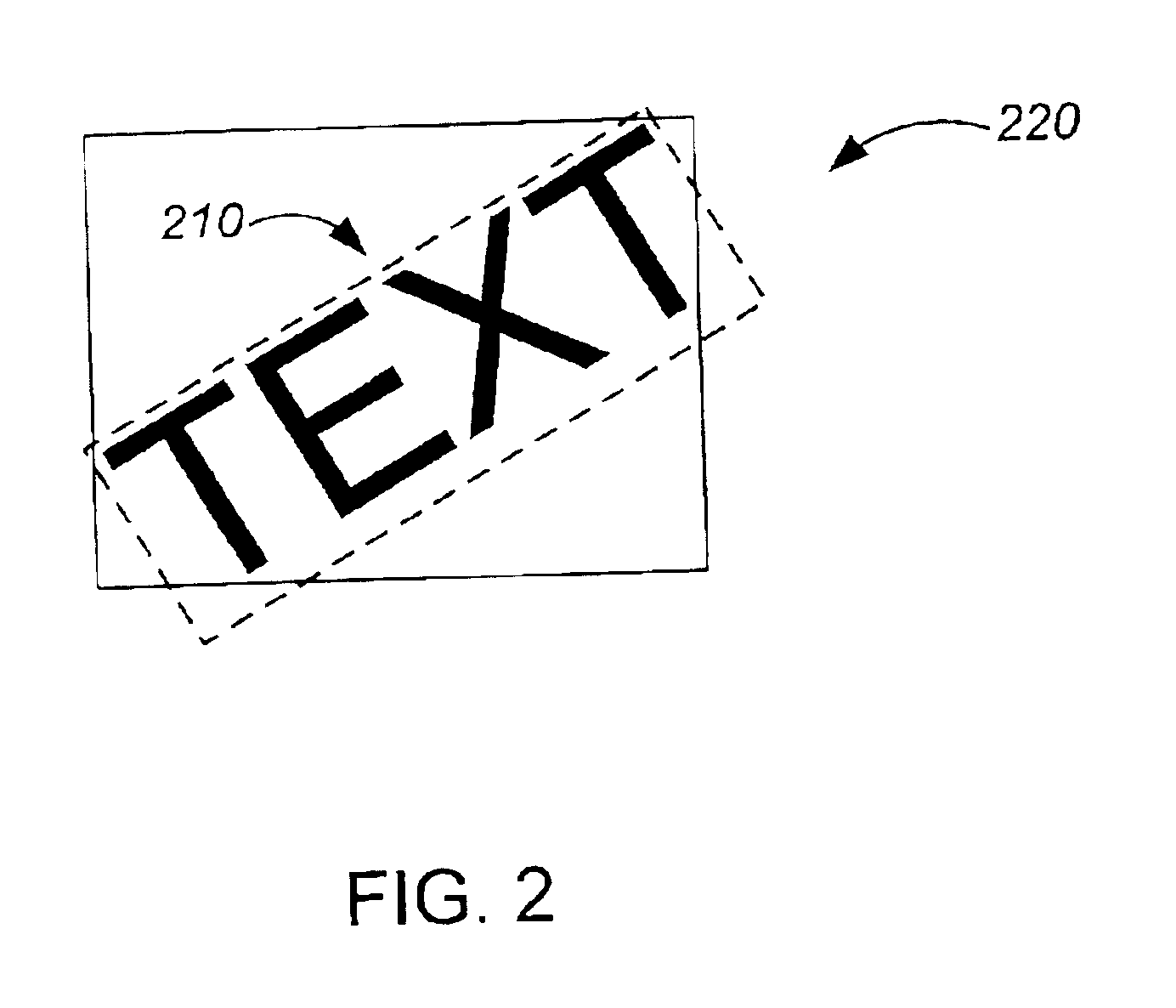Flattening images with abstracted objects
a technology of abstract objects and images, applied in the field of flattening images, can solve the problems of significant burden on computing resources, computational intensiveness, and calculation path intersections, and achieve the effect of reducing the required computing resources such as memory and processor time and improving the quality of fonts
- Summary
- Abstract
- Description
- Claims
- Application Information
AI Technical Summary
Benefits of technology
Problems solved by technology
Method used
Image
Examples
Embodiment Construction
As shown in FIG. 1, a system that flattens an image having transparent objects performs a method 100 for flattening an image in accordance with the present invention. The system receives an image having multiple objects (step 110). Some of the objects can be transparent so that underlying objects are viewable. Each object in the image has an original outline, i.e., the object's real outline. For example, if the image contains a circle and the letter A, the original outline of the circle is the circumference of the circle and the original outline of the letter A is the outline of the glyphs that represents the letter A.
Some of the objects can have original outlines that are unsuitable for use in planar mapping the received image. These unsuitable outlines include complex outlines, such as text outlines, and outlines that are resolution dependent, such as the above-described outlines that have resolution-dependent stroke instructions. For each object having an unsuitable outline, the ...
PUM
 Login to View More
Login to View More Abstract
Description
Claims
Application Information
 Login to View More
Login to View More - R&D
- Intellectual Property
- Life Sciences
- Materials
- Tech Scout
- Unparalleled Data Quality
- Higher Quality Content
- 60% Fewer Hallucinations
Browse by: Latest US Patents, China's latest patents, Technical Efficacy Thesaurus, Application Domain, Technology Topic, Popular Technical Reports.
© 2025 PatSnap. All rights reserved.Legal|Privacy policy|Modern Slavery Act Transparency Statement|Sitemap|About US| Contact US: help@patsnap.com



